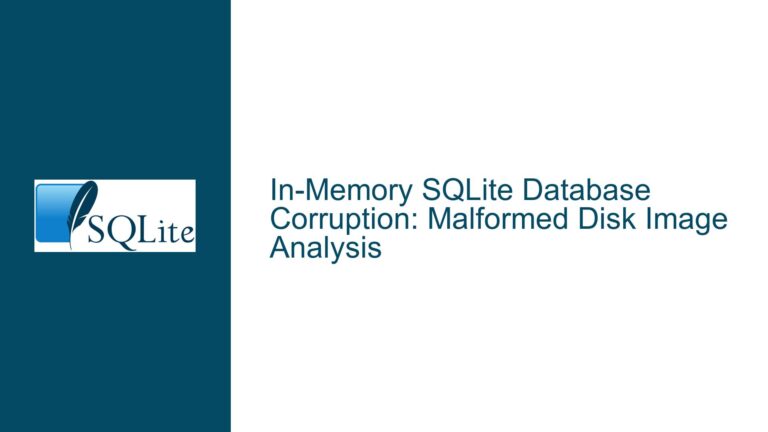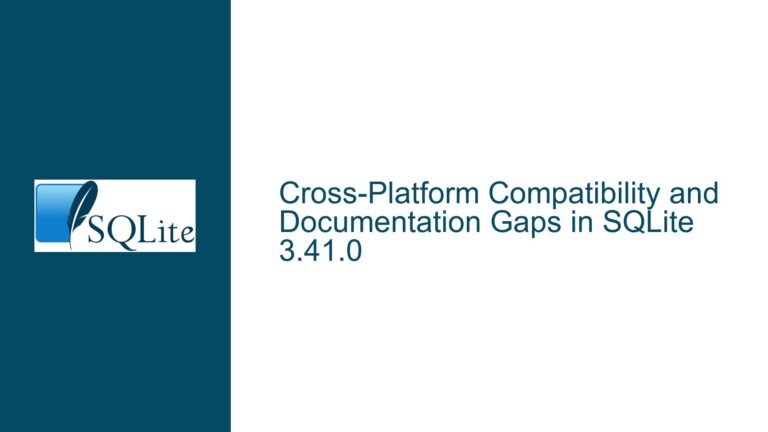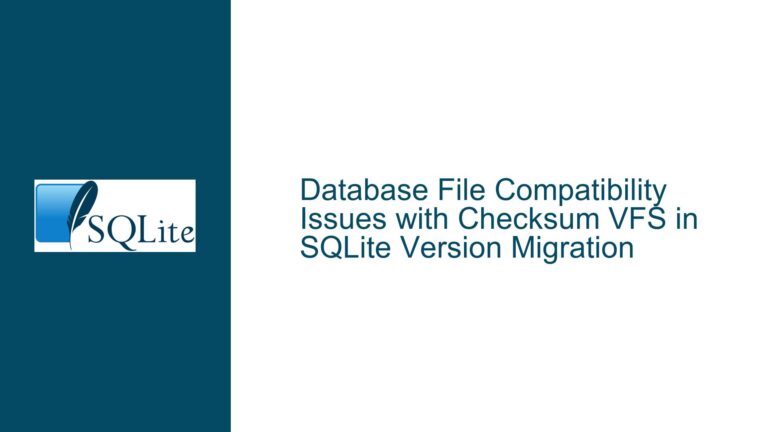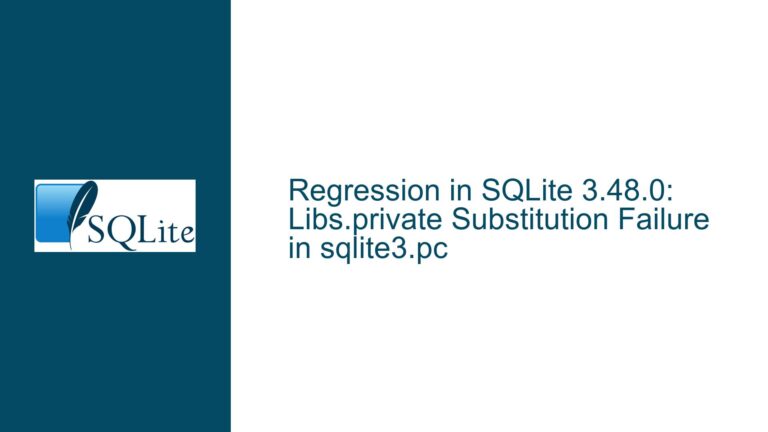Storing SQLite Databases in Cloudflare Durable Objects: Challenges and Solutions
Understanding the Integration of SQLite with Cloudflare Durable Objects
The integration of SQLite with Cloudflare Durable Objects presents a unique set of challenges and opportunities. SQLite, known for its lightweight and serverless architecture, is traditionally used in environments where the database is co-located with the application. Cloudflare Durable Objects, on the other hand, are designed to provide a consistent, low-latency storage solution across distributed systems. The core issue revolves around how to effectively store and manage SQLite databases within the constraints and capabilities of Cloudflare Durable Objects.
SQLite databases are typically stored as single files on disk, which makes them highly portable and easy to manage. However, Cloudflare Durable Objects do not natively support file systems or direct file storage. Instead, they offer a key-value store interface, which is optimized for high-speed access and consistency across distributed environments. This fundamental difference in storage paradigms necessitates a careful approach to ensure that SQLite databases can be efficiently stored, accessed, and managed within Cloudflare Durable Objects.
One of the primary challenges is the serialization and deserialization of SQLite database files into a format that can be stored in a key-value store. SQLite databases are binary files that contain a complex structure of pages, each of which holds data, indexes, or metadata. When storing these databases in Cloudflare Durable Objects, the entire database file must be serialized into a format that can be stored as a value in the key-value store. This process must be reversible, meaning that the database file can be deserialized back into its original binary format when needed.
Another challenge is the management of database transactions and concurrency. SQLite supports ACID (Atomicity, Consistency, Isolation, Durability) transactions, which ensure that database operations are performed reliably even in the presence of failures. Cloudflare Durable Objects also provide strong consistency guarantees, but the interaction between SQLite’s transaction management and Cloudflare’s consistency model must be carefully managed to avoid conflicts and ensure data integrity.
Exploring the Serialization and Deserialization Process
The serialization and deserialization of SQLite database files are critical steps in the integration process. Serialization involves converting the binary database file into a format that can be stored in Cloudflare Durable Objects’ key-value store. This typically involves encoding the binary data into a text-based format, such as Base64, which can then be stored as a string value in the key-value store. Deserialization is the reverse process, where the encoded string is converted back into the original binary format.
One approach to serialization is to read the entire SQLite database file into memory, encode it using Base64, and then store the resulting string in the key-value store. This method is straightforward but can be memory-intensive, especially for large databases. An alternative approach is to split the database file into smaller chunks, serialize each chunk individually, and store them as separate key-value pairs. This method reduces memory usage but introduces additional complexity in managing the chunks and reassembling them during deserialization.
The choice of serialization method depends on the size of the SQLite database and the performance requirements of the application. For small databases, the single-chunk approach may be sufficient, while larger databases may benefit from the chunked approach. It is also important to consider the impact of serialization and deserialization on the overall performance of the application, as these operations can introduce latency, especially when dealing with large amounts of data.
Managing Transactions and Concurrency in a Distributed Environment
Transaction management is a critical aspect of integrating SQLite with Cloudflare Durable Objects. SQLite’s ACID transactions ensure that database operations are performed reliably, even in the presence of failures. However, in a distributed environment like Cloudflare Durable Objects, managing transactions becomes more complex due to the need to coordinate operations across multiple nodes.
Cloudflare Durable Objects provide strong consistency guarantees, meaning that all operations on a given object are executed in a strict sequence, and the state of the object is consistent across all nodes. This consistency model aligns well with SQLite’s transaction management, but there are still challenges to consider. For example, when multiple clients attempt to access the same SQLite database simultaneously, conflicts can arise if the transactions are not properly coordinated.
One solution to this problem is to use a locking mechanism to ensure that only one client can access the database at a time. This can be implemented using Cloudflare Durable Objects’ built-in support for atomic operations. When a client wants to perform a transaction, it first acquires a lock on the database, performs the transaction, and then releases the lock. This ensures that no two clients can modify the database simultaneously, preventing conflicts and ensuring data integrity.
Another approach is to use a distributed transaction coordinator that manages transactions across multiple nodes. This coordinator ensures that all nodes agree on the outcome of a transaction before it is committed, providing a higher level of consistency and reliability. However, this approach introduces additional complexity and may not be necessary for all applications.
Optimizing Performance and Scalability
Performance and scalability are key considerations when integrating SQLite with Cloudflare Durable Objects. SQLite is designed for single-node operation and may not scale well in a distributed environment. However, with careful optimization, it is possible to achieve good performance and scalability when using SQLite with Cloudflare Durable Objects.
One way to optimize performance is to minimize the amount of data that needs to be serialized and deserialized. This can be achieved by only storing the necessary parts of the database in Cloudflare Durable Objects and keeping the rest of the data in local storage. For example, if the application only needs to access a small subset of the database, it may be possible to store only that subset in Cloudflare Durable Objects and keep the rest of the database on the local file system.
Another optimization technique is to use caching to reduce the number of times the database needs to be accessed. Cloudflare Durable Objects provide built-in support for caching, which can be used to store frequently accessed data in memory. This reduces the need to repeatedly serialize and deserialize the database, improving performance and reducing latency.
Scalability can be improved by partitioning the database across multiple Cloudflare Durable Objects. Each object can store a portion of the database, and the application can route queries to the appropriate object based on the data being accessed. This approach allows the database to scale horizontally, as additional objects can be added to handle increased load.
Ensuring Data Integrity and Reliability
Data integrity and reliability are paramount when storing SQLite databases in Cloudflare Durable Objects. SQLite’s ACID transactions provide a strong foundation for data integrity, but additional measures may be needed to ensure reliability in a distributed environment.
One important consideration is the durability of the data stored in Cloudflare Durable Objects. While Cloudflare provides strong consistency guarantees, it is still possible for data to be lost in the event of a failure. To mitigate this risk, it is important to implement a backup strategy that regularly copies the data stored in Cloudflare Durable Objects to a more durable storage solution, such as a cloud storage service.
Another consideration is the handling of conflicts that may arise when multiple clients attempt to modify the same data simultaneously. As mentioned earlier, a locking mechanism can be used to prevent conflicts, but it is also important to have a strategy for resolving conflicts when they do occur. This may involve implementing a conflict resolution algorithm that determines which version of the data should be retained and which should be discarded.
Finally, it is important to monitor the health and performance of the system to ensure that it is operating as expected. This includes monitoring the performance of Cloudflare Durable Objects, as well as the health of the SQLite databases stored within them. By proactively identifying and addressing issues, it is possible to maintain a high level of data integrity and reliability.
Conclusion
Storing SQLite databases in Cloudflare Durable Objects presents a unique set of challenges, but with careful planning and optimization, it is possible to achieve a robust and scalable solution. The key to success lies in understanding the differences between SQLite’s file-based storage model and Cloudflare Durable Objects’ key-value store, and in implementing strategies to manage serialization, transactions, performance, and data integrity. By following the best practices outlined in this guide, developers can effectively integrate SQLite with Cloudflare Durable Objects and build applications that are both reliable and scalable.






